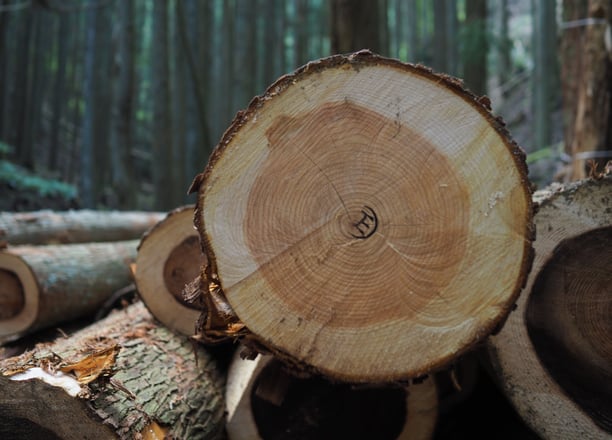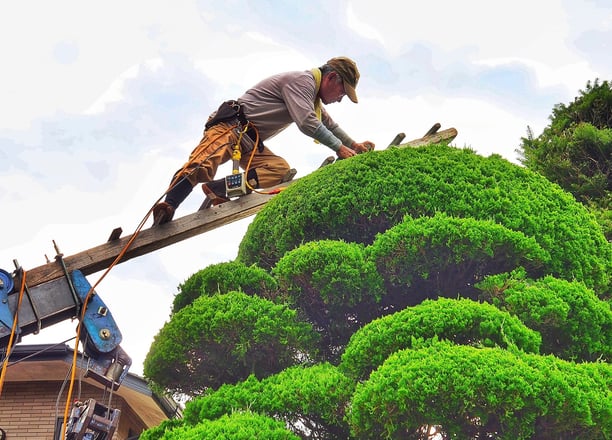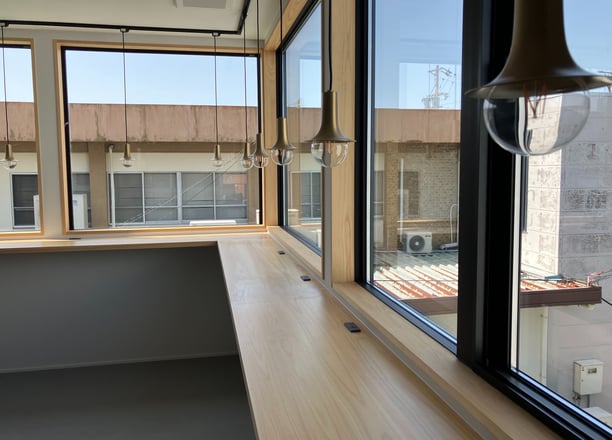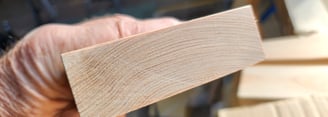Hinoki (Chamaecyparis obtusa)
Download our Hinoki Information Sheet
Hinoki (Chamaecyparis obtusa) is a symbol of Japan’s enduring craftsmanship, natural beauty, and architectural excellence. Used in the construction of sacred temples, traditional baths, and modern luxury interiors, it embodies a legacy of harmony between nature and human ingenuity.


Natural Beauty, Strength, and Purity
Hinoki is distinguished by its delicate pinkish heartwood and nearly white sapwood, creating a serene and sophisticated aesthetic. When polished, its surface gleams with a natural glow that’s smooth to touch and visually refined. But beyond its beauty, Hinoki is celebrated for its moisture resistance, antibacterial properties, and calming aroma.
The wood’s essential oils emit a soft, therapeutic fragrance often associated with onsen (hot springs) and traditional ryokan inns, evoking a sense of tranquility and relaxation. This makes it an ideal choice for bathrooms, saunas, wellness spaces, and spa interiors, where the aroma enhances the atmosphere and well-being.
Versatile in Tradition and Innovation
While its legacy is rooted in ancient temples, Hinoki continues to inspire modern architecture, high-end furniture, and luxury interior design. Its fine grain and ease of processing make it perfect for custom joinery, while its durability and resistance to warping ensure it remains a sustainable choice for decking, cladding, and premium fittings.
As the world shifts towards eco-conscious living, Hinoki stands as a symbol of sustainable forestry. Japan’s forestry practices ensure responsible harvesting and replanting, maintaining a delicate balance between tradition and environmental stewardship. This commitment to sustainability makes Japanese timber one of the most ethically sourced, low-impact building materials available today.
At Japanese Lumber, we bring you the finest kiln-dried Hinoki boards, sourced with care and available in various sizes to meet your project’s needs. Whether you seek the elegance of traditional Japanese woodwork or the refinement of modern luxury design, Hinoki offers an unparalleled connection to nature, heritage, and craftsmanship.
A Heritage Rooted in Japanese Tradition
Hinoki is more than just a building material, it’s a sacred wood. It has been the preferred choice for crafting temples, shrines, and castles for centuries, thanks to its strength, resistance to decay, and natural elegance.
Ise Shrine, one of Japan’s most revered Shinto shrines, is mostly built from Hinoki and is ritually rebuilt every 20 years in a ceremony called Shikinen Sengu. This ritual has been ongoing for over 1,300 years. Similarly, Hōryū-ji Temple, a UNESCO World Heritage site, has stood for over 1,400 years, a testament to the resilience of Hinoki in the face of time and nature’s forces.
The wood’s fine grain and uniform texture make it ideal for Sashimono, the intricate Japanese art of wooden joinery, which uses no nails or screws. This technique, passed down through generations, allows Hinoki structures to expand and contract naturally, ensuring they withstand Japan’s humid climate and even seismic activity.







